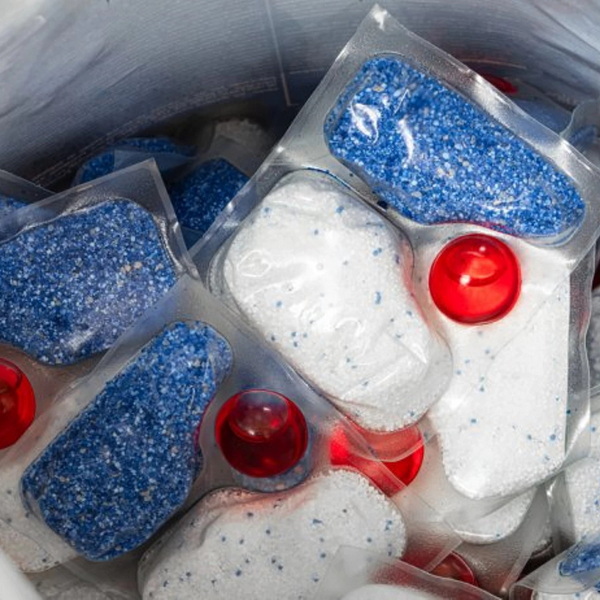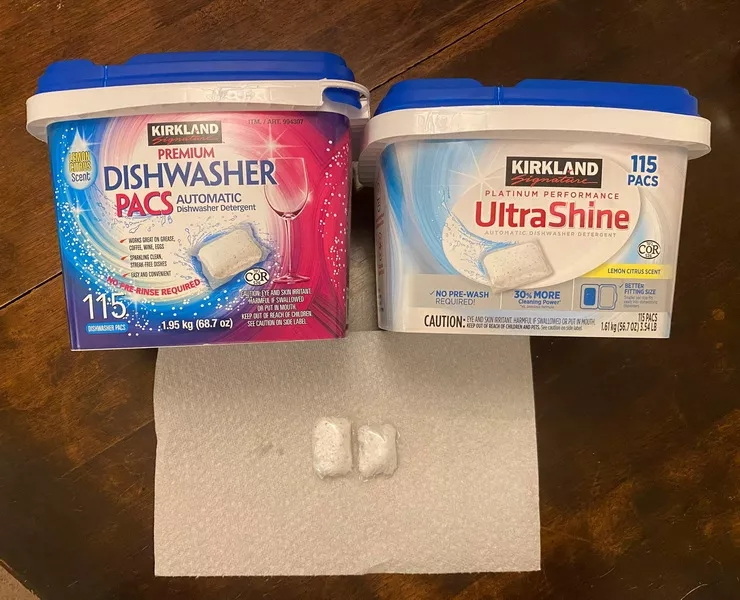Dongguan UFine Daily Chemical Co.,Ltd.
- All
- Product Name
- Product Keyword
- Product Model
- Product Summary
- Product Description
- Multi Field Search
Views: 222 Author: Tomorrow Publish Time: 11-07-2025 Origin: Site











Content Menu
● Materials Used in Poach Pods
● Advantages of Using Dishwasher Safe Poach Pods
● How to Identify Dishwasher Safe Poach Pods
● How to Clean Poach Pods in the Dishwasher
● Manual Cleaning vs Dishwasher Cleaning
● Common Issues with Dishwashing Poach Pods
● Safety Precautions When Dishwashing Poach Pods
● Do All Poach Pods Work in Dishwashers?
● Extending the Life of Poach Pods
● Additional Considerations for Prolonged Longevity
● Practical Tips for Everyday Use
● Experiment: Testing Durability and Safety
● Environmental Impact and Sustainability
● FAQ
>> 1. Are Silicone Poach Pods Dishwasher Safe?
>> 2. Can Plastic Poach Pods Go in the Dishwasher?
>> 3. How Should I Place Poach Pods in The Dishwasher?
>> 4. What to Do If Egg Sticks to Poach Pods After Dishwashing?
>> 5. How Often Should I Replace Poach Pods?
Poach pods have become a staple kitchen tool for anyone who loves poached eggs. These small silicone cups make egg poaching easy, mess-free, and consistent. However, with daily use, proper cleaning becomes a concern. Dishwasher safety is often questioned among kitchen enthusiasts and home cooks. In this comprehensive guide, we will explore whether poach pods are truly dishwasher safe, discuss material types, provide cleaning tips, address safety precautions, and offer advice for prolonging their lifespan.

Poach pods are small, flexible cups usually made from food-grade silicone. They are designed to hold eggs while they poach in boiling water, facilitating smooth release and perfect shape. Their flexibility, heat resistance, and non-stick properties have made them popular in kitchens worldwide.
Companies produce poach pods in varying shapes, colors, and sizes, but the core function remains consistent: to simplify egg poaching and maintain uniform results. Silicone's non-porous character plays a major role in easy cleaning and durability.
The most common material for poach pods is food-grade silicone. This material is chosen for its:
- High heat resistance (often up to 220°C)
- Non-stick qualities
- Flexibility
- Safety with direct food contact
- Long lifespan with proper care
Some older versions might be made from plastic, but silicone dominates the market due to hygiene and safety advantages. When considering dishwasher safety, food-grade silicone stands out since it tolerates both high temperatures and harsh detergents typical of dishwashers.
Using dishwasher safe poach pods provides several benefits:
- Convenience: It saves time and reduces the need for scrubbing or soaking after use.
- Sanitation: Dishwashers use high heat to eliminate bacteria, ensuring the pods are clean and safe for food contact.
- Efficiency: Multiple pods can be cleaned at once alongside other kitchen tools.
- Protection: Dishwashing helps maintain the integrity of the silicone material without causing cracking or warping.
- Longevity: Proper cleaning prolongs the lifespan of poach pods, making them an economical solution for busy kitchens.
Knowing whether your poach pods are truly dishwasher safe is essential. Not all silicone products are created equal, so it's crucial to check the manufacturer's guidelines.
Manufacturers typically indicate dishwasher safety on packaging or in product manuals. If this information is absent, check for these signs:
- Stamped or printed dishwasher symbol on the pod or box
- Explicit mention in product descriptions on websites or retail listings
- Brand reputation and customer reviews confirming dishwasher safety
Food-grade silicone, by nature, is designed to withstand dishwasher environments. Some poach pods may include heat resistance information, which is helpful for both boiling and dishwashing.
Cleaning poach pods in the dishwasher is simple, but following the best practices will help maintain their quality:
1. Rinse First: Immediately rinse the poach pods under warm water to remove any egg residue.
2. Position Properly: Place them on the top rack of the dishwasher. Avoid squeezing them into corners where water circulation is poor.
3. Use Mild Detergent: Standard dishwasher detergents work well; avoid abrasive or bleach-based products.
4. Dry Completely: Ensure the pods are fully dry after the wash to prevent mildew. Silicone dries quickly, but airflow is important.
5. Inspect Regularly: After each cycle, check for lingering residues or deformities and hand wash if needed.
Dishwasher cleaning eliminates hard-to-reach residues, but manual inspection ensures ongoing hygiene and usability.

Some users prefer hand washing over machine cleaning to extend poach pod longevity. Here's a quick comparison:
| Aspect | Manual Cleaning | Dishwasher Cleaning |
|---|---|---|
| Time | Requires more time and effort | Saves time, effortless |
| Thoroughness | May miss tiny residues | High temperature ensures deep cleaning |
| Detergents | More control over detergent strength | Limited by dishwasher detergent options |
| Lifespan | Less wear from harsh environments | Dishwasher safe pods withstand repeated use |
Both methods work, especially with food-grade silicone, but dishwasher cleaning is preferred for convenience and thorough sanitation.
While poach pods are generally robust, improper dishwashing can lead to:
- Warping (from excessive heat, especially in cheap plastics)
- Sticky residue (from using egg yolks or oil without pre-rinsing)
- Fading of colors over time
- Trapped odors if not dried properly
Always follow manufacturer recommendations and avoid overcrowding pods in the dishwasher. Replace pods that develop cracks or lose their non-stick property.
While dishwasher cleaning is straightforward, applying these precautions preserves both safety and pod lifespan:
- Avoid using high heat dry settings unless specified by manufacturer
- Do not stack pods directly on heating elements
- Check silicone quality before first dishwasher use
- Separate pods from sharp utensils to prevent tearing
- Remove staining promptly by soaking in baking soda solution
Food safety is paramount. Dishwasher cleaning is generally safe, but always verify the integrity of your poach pods after each wash.

Most modern poach pods are dishwasher safe. However, some products, especially those with decorative coatings, paints, or complex shapes, may not be suitable. Cheap plastic pods are more likely to warp, crack, or degrade after repeated dishwashing cycles.
If uncertain, you can perform a water and heat test. Soak the pod in hot water for fifteen minutes; if it retains its shape and flexibility, it is likely dishwasher safe.
Manufacturers may also set unique recommendations for “top rack only” or “low heat wash,” so check those details before cleaning.
Even dishwasher-safe poach pods can break down with improper care. Employ these tips to maximize longevity:
- Rinse pods immediately after use to prevent egg protein from hardening
- Use gentle dishwashing cycles when possible
- Avoid harsh scouring pads or chemical cleaners
- Store pods in a cool, dry place, and keep them out of direct sunlight
- Replace worn-out pods to maintain food safety standards
Attention to cleaning routines pays off in both product appearance and reliable poaching performance.
- Temperature transitions: Avoid exposing silicone pods to extreme temperature fluctuations rapidly, as this can cause micro-cracks over time.
- Odor control: If your pods retain egg odor, a soak in a solution of water and white vinegar (1:1) for 10–15 minutes can help neutralize odors before regular washing.
- Color retention: If pods show color transfer from berries or strong spices, pre-soak in a mild baking soda solution to reduce staining.
- Storage practices: Keep pods separated to prevent sticking or deformation; using a breathable container helps air circulation and drying.
These extra practices are simple and cost-effective ways to keep pods performing well across many uses.
- Pre-warm water: Start with slightly warmer water when poaching to reduce the need for long poaching times and to minimize wear on pods.
- Egg freshness matters: Fresher eggs hold their shape better; if using older eggs, adjust poaching time to prevent overcooking.
- Silicone care: Avoid abrasive cleaners that can dull the silicone surface; microfiber cloths work well for light cleaning and quick maintenance.
- Environmental considerations: If you cook eggs daily, consider having two sets of pods to rotate, ensuring every batch has a clean pod ready.
- Cross-use awareness: Some silicone utensils may share molds with poach pods; keep a separate set to avoid cross-contamination and odors.
These practicalities help users integrate poach pods seamlessly into their cooking routines.
- Myth: All silicone is indestructible in the dishwasher. Reality: Quality, coating, and design influence dishwasher compatibility. Always verify with the manufacturer.
- Myth: Poach pods cannot be used for other foods. Reality: Many silicone pods handle other delicate foods like steamed vegetables or small dumplings; confirm temperature limits.
- Myth: Dishwashers always sanitize better than hand washing. Reality: Proper hand washing with hot water and sanitizer can achieve similar hygiene levels if done correctly.
- Myth: All colored pods stain quickly. Reality: Staining depends on ingredients and cleaning routine; some staining is cosmetic and does not affect function.
Addressing these myths helps users set realistic expectations and use poach pods effectively.
To reassure users, a controlled durability test can be informative. Over several weeks, you can:
- Track any warping, tearing, or color fade after repeated dishwasher cycles.
- Monitor odor retention and ease of cleaning after each cycle.
- Compare top-rack versus standard cycles to determine which settings best preserve integrity.
Documenting results with simple notes will help users understand how their pod choices perform in real kitchens.
Silicone is valued for its longevity, reducing waste associated with disposable tools. When used for many years, the environmental impact per year decreases. Proper recycling or disposal should follow local guidelines for silicone products, especially if any coatings or fillers are present. By choosing durable, reusable poach pods and maintaining them well, households can minimize landfill contribution and avoid frequent replacements.
Poach pods are a practical, durable solution for effortless egg poaching, and the majority of modern poach pods are dishwasher safe. By understanding material differences, following manufacturer instructions, and employing careful cleaning and maintenance practices, you can maximize the lifespan and hygiene of your poach pods. Whether you wash them by hand or in the dishwasher, consistent care ensures reliable performance and perfectly poached eggs every time.

Yes, most silicone poach pods are dishwasher safe due to their high heat resistance and flexibility. Always check the product label or packaging to confirm compatibility.
Some plastic poach pods are dishwasher safe, but lower-quality plastics may warp or crack. Confirm the manufacturer's instructions for your specific brand.
Place poach pods on the top rack for optimal water flow and avoid direct contact with heating elements. Spread them out to prevent nesting and proper cleaning.
Soak the pods in warm water with mild detergent. If residue persists, scrub gently with a soft sponge or use a baking soda paste for stubborn stains.
Replace poach pods if you notice cracks, persistent stains, loss of flexibility, or burnt residue. Regular inspection is the key to maintaining food safety and hygiene.